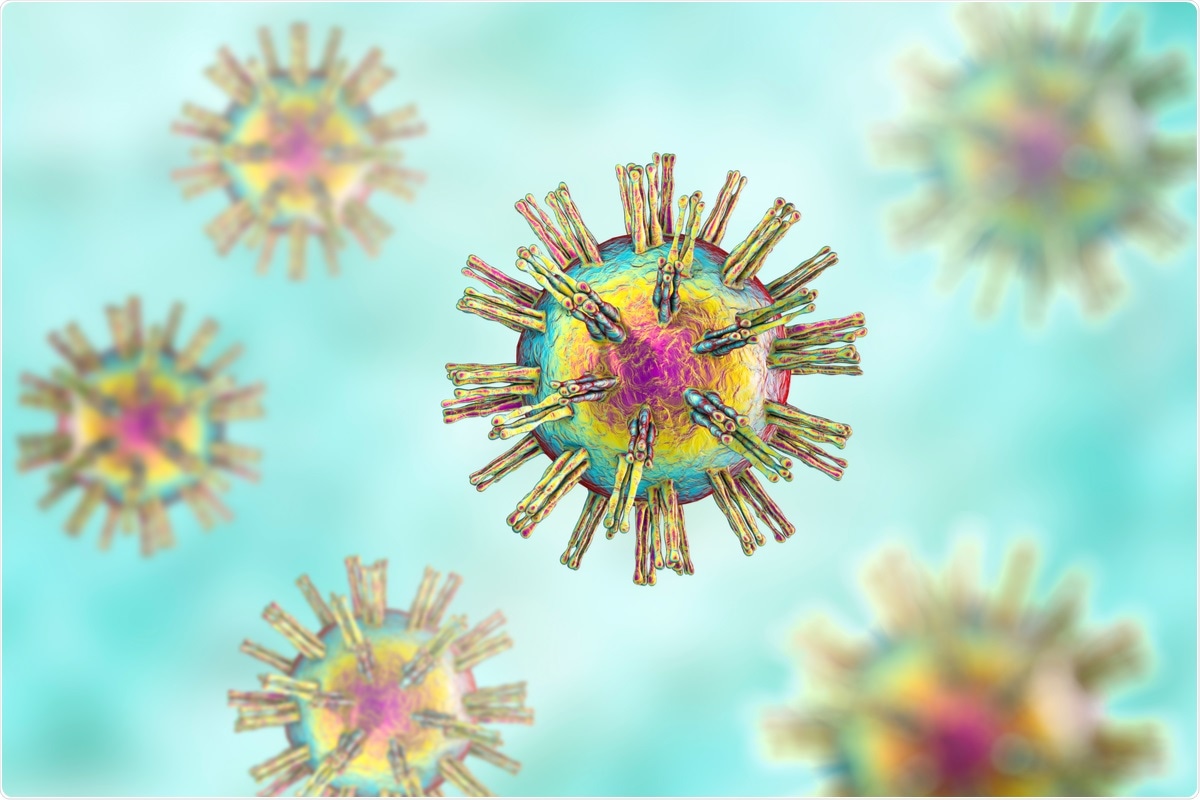Recent research by scientists from the University of Illinois demonstrates a process that halts the herpes simplex virus 1 from inducing severe brain damage and death.
 Image Credit: Kateryna Kon/Shutterstock.com
Image Credit: Kateryna Kon/Shutterstock.comScientists identified a function of a protein complex, mammalian target of rapamycin complex 2, in an antiviral defense mechanism. The protein complex hinders HSV-1 virus infection by the quick activation of antiviral immunity and safeguards the host by hindering encephalitis—brain inflammation—and death from HSV-1 infection.
The article titled “mTORC2 confers neuroprotection and potentiates immunity during virus infection” was published in the Nature Communications journal. The study was carried out by UIC scientists in the lab headed by Deepak Shukla, the Marion H. Schenk Esq. Professor in Ophthalmology for Research of the Aging Eye, and vice chair for research at UIC.
One major cause of infectious blindness is ocular herpes infection and it can result in lethal brain infections. The HSV-1 hides in neuronal tissues after primary infection and later reactivates under immune suppressive conditions. This might cause encephalitis, resulting in memory loss, permanent brain damage, or even death.
Herpes is a common infection, even in healthy individuals, and seldom causes death. According to Shukla, UIC scientists analyzed mTORC2 to comprehend how antiviral defense mechanisms operate.
The scientists used genetically modified mice models and unraveled the significance of mTORC2 in the activation of innate- and virus-adaptive immunity at the time of ocular HSV-1 infection.
Animals with a lack of functional mTORC2 were found to show significant loss of immune activation and more spread of virus to neuronal tissues. Functional mTORC2 limits the virus spread from ocular to neuronal tissues by supporting the production of antiviral cytokines and driving immune cells to quickly identify HSV-1 infected cells.”
Deepak Shukla, Marion H. Schenk Esq. Professor, Ophthalmology, University of Illinois
Shukla also says, “MTORC2 also protects the ocular and neuronal cells from virus-induced cell death offering protection to neuronal tissue.”
To fight lifelong HSV-1 infection, it is vital to unravel the function of the major cellular proteins and modulate their function to prevent the virus from replicating and creating damage, elaborated Rahul Suryawanshi, the study’s lead author, a former postdoctoral trainee of Shukla, now at the Gladstone Institutes, San Francisco.
mTORC2 activates cell survival machinery in ocular and neuronal tissues at the time of herpes infection. Suryawanshi also stated that this restrains a programmed cell death mechanism, which limits virus spread. However, eventually, it is detrimental to neuronal cells.
The animal experiments highlight the importance of using neuronal cell death inhibitors during viral encephalitis that may mimic and/or improve mTORC2 functions and prevent brain injuries.”
Chandrashekhar Patil, Study Co-Author and Visiting Scholar, Department of Ophthalmology and Visual Sciences, University of Illinois
Shukla further states that the research elaborates that the pro-survival functions of mTORC2 might not be limited to viral infections. They can also apply to various other diseases.
“Our study will motivate other researchers to investigate mTORC2 in neurodegenerative disorders and diseases as well,” Shukla said.
Source:
Journal reference:
Suryawanshi, R. K., et al. (2021) mTORC2 confers neuroprotection and potentiates immunity during virus infection. Nature Communications. doi.org/10.1038/s41467-021-26260-5.